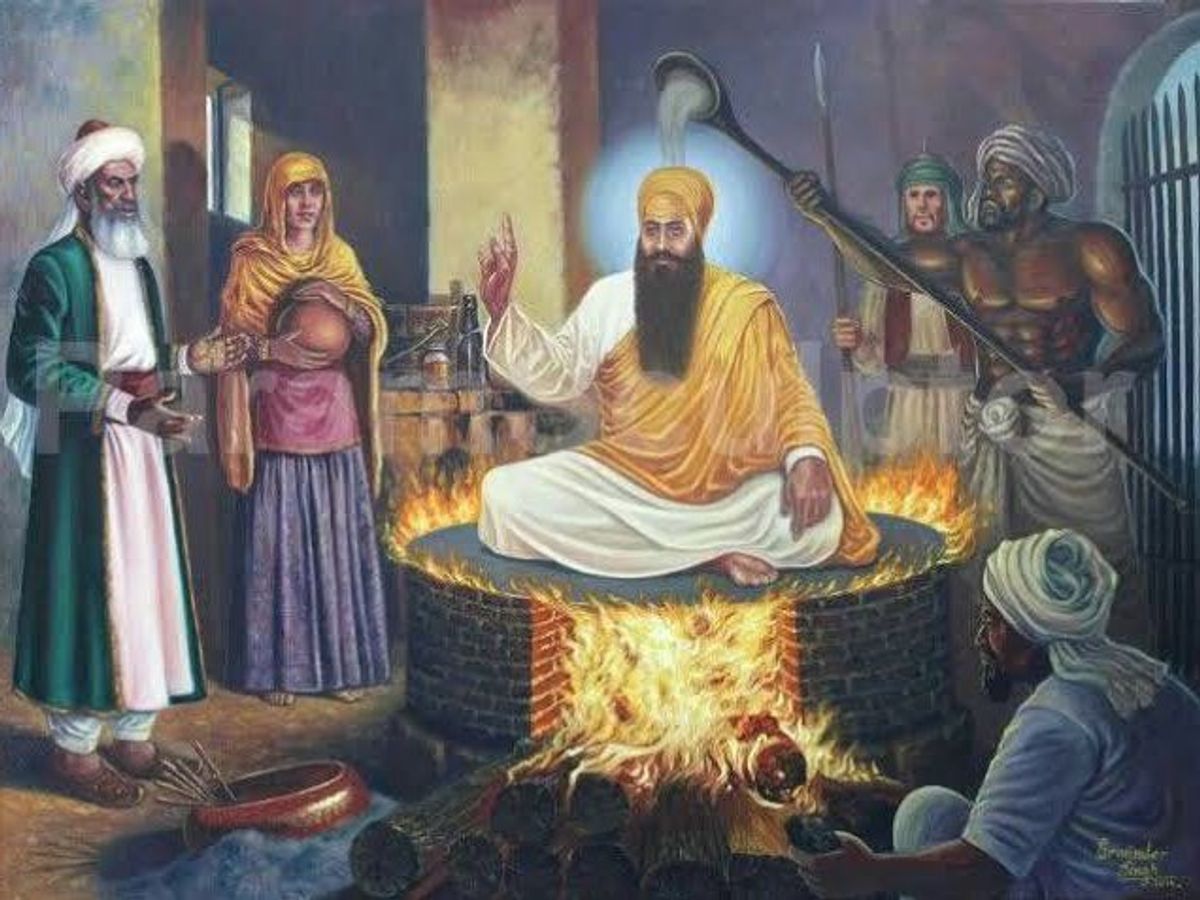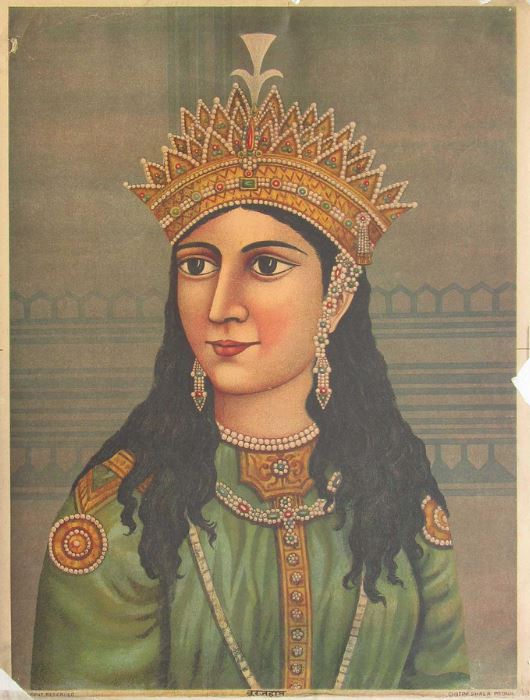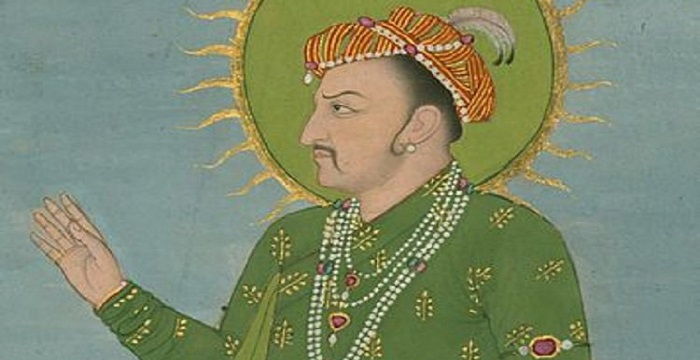Nur-ud-din Muhammad Salim, known by his imperial name Jahangir (August 1569 – 28 October 1627), was the fourth Mughal Emperor, who ruled from 1605 until he died in 1627. He assumed the title of Nur-ud-din Muhammad Jahangir Badshah Ghazi. His imperial name means ‘conqueror of the world’.
Important features of Jahangir’s reign
Jahangir is perhaps the only ruler who although ruled for about 22 years but about 16 years he was only a ruler in name only as during this period, his wife Nur Jahan was the virtual ruler. He is famous for his ‘golden chain of justice’.

His twelve orders issued in the early period of his reign showed his great concern for the welfare of his subjects. The long-drawn war between Mewar and the Mughals came to an end. Relations between the Mughal rulers and the Sikhs began to deteriorate.
Two visitors namely Captain W.Cook and Sir Thomas Roe came to the court of Jahangir. The latter who was the ambassador of King James was able to get permission from Jahangir allowing the English to trade at Surat. With time, trade was followed by the rule of the English over India.
Jahangir’s Chain of justice
The earliest measure of Jahangir was that a golden chain having 60 bells and weighing several ‘maunds’ was fastened between the Shahburj of Agra fort and a stone pillar raised on the banks of river Jamuna. People seeking justice were required to pull this chain to put forth their complaints or petitions to the King. This act speaks very high of Jahangir’s sense of justice but to what extent it proved helpful is not clearly known.
Issuance of 12 rules of conduct (‘Dastur-ul-Amal’)
Jahangir issued the following orders which demonstrate his concern for the welfare of the people. He abolished the Tagma’ and “meerwahi” toll taxes and the taxes that the Subedars imposed on the people for their expenses. He ordered the construction of mosques, sarais, and wells on the road-sides which reduced the dangers from the thieves and dacoits.
He ordered that the property of the dead would be passed over to their legal heirs and the unclaimed property would go to the state, the income of which would be spent on public welfare. He banned the manufacture and sale of the intoxicants although he himself was addicted to drinking.
He disallowed the mutilation of the limbs of the criminals. He ordered that the land-lords would not forcibly occupy the lands of the farmers. He ordered for the construction of government hospitals and appointed the physicians (hakims) in them. Animal slaughter was banned on two days in the week i.e. Thursday, his Coronation day, and Sunday, the day of his father, and on certain other occasions in the year.
Akbar held Sunday with respect because it was the day of the sun. So Jahangir did like-wise. He reinstated all the mansabdars, appointed during Akbar’s reign, in their positions and promoted them on merit. The Jagirs, known as Aima and Madadgar, granted to the religious and charitable institutions were allowed to remain with them. All the convicts, serving for longer periods, were released from the jails.
Revolt of Prince Khusro
In 1606, Jahangir’s eldest son and an aspirant of the throne revolted but were defeated. It is said that after his arrest, he was poisoned to death.
Execution of Guru Arjun Dev (1606)

Two reasons are attributed to Jahangir’s conflict with the 5th Sikh Guru Arjun Dev. One, it is said that the Sikh guru helped prince Khusro against the emperor. Second, Guru Arjun Dev was becoming popular and promoting the creed of Sikhism. The execution of the Guru greatly provoked the Sikhs and they began to prepare themselves to wreak vengeance upon the Mughals, They declared their Guru a ‘martyr’.
Marriage with Nur Jahan (1611)

Nur Jahan’s marriage with Jahangir almost eclipsed his personality. Jahangir in his biography ‘ Tuzuk-i-Jahangir’ himself wrote about his influence, “I have sold my kingdom to my beloved queen for a cup of wine and a dish of soup.”
Treaty with Mewar (1615)
Jahangir and Rana Amar Singh, son of Rana Pratap saw several ups and. downs in the struggle which continued for about 10 years. In 1615 both signed a peace treaty. The treaty reflected the statesmanship of Jahangir. The Rana accepted the suzerainty of the Mughal emperor.
The Rana was not asked to enter into matrimonial relations with the emperor and he, in place of himself, sent his son, Prince Karan to the Mughul service at the court. Jahangir restored all territory of Mewar including the fort of Chittor to the Rana on condition that the fort would not be repaired.
Revolt of Prince Khurram (1622)
Prince Khurram (later on Shah Jahan) was asked by Jahangir to crush a revolt in Kandhar but he refused to fear that Nur Jahan might create difficulties for him in his absence from India. His revolt failed and he begged pardon.
Revolt of Mahabat Khan (1622)
He was an able commander. He came into prominence when he suppressed the revolt of Khurram. He was, however, considered a powerful opponent by Nur Jahan who wanted to have her way. Mahabat Khan felt humiliated by her treatment. He revolted but had to seek pardon. Emperor Jahangir pardoned him keeping his past services in view.

